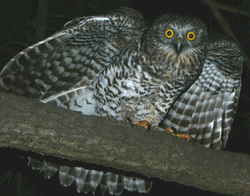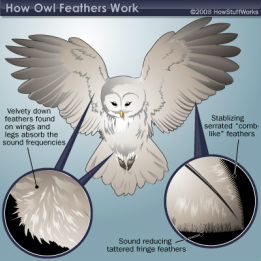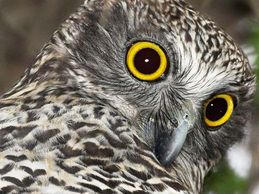
Behavioural Adaptation:
- Owls are nocturnal meaning they are predominately active at night. By hunting at night owls are not in competition with other birds of prey that are hunting for food. It also eliminates the opportunity for the owls prey to see them and escape.

Structural Adaptation:
- The wings of the owl have adapted for silent flight. The feathers are specialised to have downy feathers that cover the surfaces of the wings minimise sound when they are being flapped. This adaptation helps the owl to successfully hunt their prey as their prey cannot hear them coming.

Physiological and Structural Adaptation:
- Owls have forward facing eyes as their eyes are fixed into their sockets meaning they have to turn their entire head to see in a different direction. Due to this owls have exceptional binocular vision. Binocular vision refers to a type of vision that arises from the ability of an animal to view an object with both eyes at the same time. This allows the owl to have precise visual information needed to spot and capture their prey.
